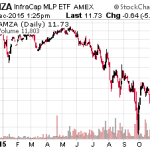The New Zealand dollar continues to fall in the wake of the electoral results. While most other high income economies appear to be shifting to the right, New Zealand has lurched to the left.

A look at the New Zealand dollar’s performanceand one might conclude that investors are scared. Today’s 0.6% decline in the Kiwi, brings the loss since October 13 to 3.6%.
However, New Zealand stocks and bonds have fared better. The 10-yield is flat since the currency’s depreciation accelerated and while the two-year yield is slightly lower.The equity market has been stellar.New Zealand’s Exchange 50 Gross Index of the top 50 companies by free-float adjusted market cap extended its winning streak it 15th consecutive session with today’s small advance. It is up a little more than 4% over the past month, a little more than Australia, and more than most major bourses save Japan, where the Nikkei is up 7.4%.
Among the first two initiatives that the new government advocated are a hike in the minimum wage and changing the central bank’s mandate to be more like the Fed’s with full employment given its due alongside price stability. Allied with the New Zealand First Party, Labour leader Jacinda Ardern, who will be sworn in on Thursday as the new Prime Minister summarized the thrust of her government: “We are committed to being fiscally responsible and growing the economy while ensuring all New Zealanders share in our economic prosperity.”
The new government intends to progressive raise the minimum wage to NZ$20 an hour by early 2021 from NZ$15.75 currently. In addition to adding a full employment mandate, the new government will seek to change the formulation of policy to a committee that includes non-central bank members, like the Bank of England’s Monetary Policy Committee, rather than the Governor being the sole decision maker.














Leave A Comment